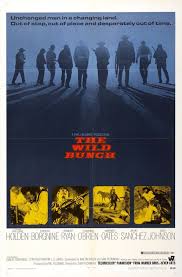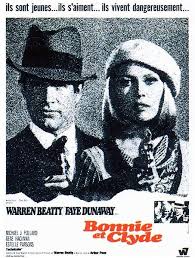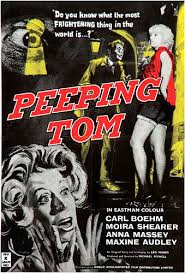However, the decade began with a challenge in the form of Michael Powell's Peeping Tom, which had been seen by the Board at the script stage and provoked a remark from Trevelyan about its 'morbid concentration on fear'. Various cuts had been suggested at script stage, and the film was passed 'X' in 1960 with cuts. Critics greeted the film with a torrent of abuse and it failed to please the public, damaging Powell's reputation.
 New realism took hold in British films, with the submission of a number of 'kitchen sink' dramas from the British New Wave directors - Karel Reisz's Saturday Night And Sunday Morning in 1960, Tony Richardson's The Loneliness
New realism took hold in British films, with the submission of a number of 'kitchen sink' dramas from the British New Wave directors - Karel Reisz's Saturday Night And Sunday Morning in 1960, Tony Richardson's The Loneliness of the Long Distance Runner in 1962, both passed 'X', the latter with cuts. Saturday Night... had been submitted to the Board at script stage. Concerns were expressed about the language, violence and the theme of abortion, and the script was modified to meet these concerns This might have been the 'swinging Sixties', but in spite of the film's BBFC uncut release at 'X', Warwickshire Council deemed it too strong and demanded that cuts be made for a local certificate. The film was passed 'PG' on video in 1990.
of the Long Distance Runner in 1962, both passed 'X', the latter with cuts. Saturday Night... had been submitted to the Board at script stage. Concerns were expressed about the language, violence and the theme of abortion, and the script was modified to meet these concerns This might have been the 'swinging Sixties', but in spite of the film's BBFC uncut release at 'X', Warwickshire Council deemed it too strong and demanded that cuts be made for a local certificate. The film was passed 'PG' on video in 1990. By 1966, Lewis Gilbert's Alfie was passed uncut, with the remark
By 1966, Lewis Gilbert's Alfie was passed uncut, with the remark that it contained a 'basically moral theme' in spite of some misgivings at the Board about the abortion theme. Attitiudes to sexuality were on the change in the wake of the 1957 Wolfenden Report which recommended a relaxation of the laws concerning homosexuality, although no new legislation was to appear for another ten years. Trevelyan claimed that the BBFC had never banned the subject of homosexuality from the screen but 'the subject was one that would probably not be acceptable to the British audience'. Basil Dearden's Victim contributed to the debate in 1961, containing the line 'they call the law against homosexuality the blackmailer's charter'. The film was passed 'X' with a brief cut. When the film version was submitted for a modern classification in 2005, it was passed 'PG'.
that it contained a 'basically moral theme' in spite of some misgivings at the Board about the abortion theme. Attitiudes to sexuality were on the change in the wake of the 1957 Wolfenden Report which recommended a relaxation of the laws concerning homosexuality, although no new legislation was to appear for another ten years. Trevelyan claimed that the BBFC had never banned the subject of homosexuality from the screen but 'the subject was one that would probably not be acceptable to the British audience'. Basil Dearden's Victim contributed to the debate in 1961, containing the line 'they call the law against homosexuality the blackmailer's charter'. The film was passed 'X' with a brief cut. When the film version was submitted for a modern classification in 2005, it was passed 'PG'.As public tolerance increased in the sweeping social change of the sixties, films became more explicit, but in practice the Board still requested cuts, usually to verbal and visual 'indecency'. Ingmar Bergman's 1964 The Silence
 created a stir because of its treatment of sexual matters . After extensive consultation with the distributor and the director, Trevelyan passed the film 'X' with 35 seconds of cuts to sex scenes. The decade also saw the establishment of the Carry On.. series, characterised by its use of seaside postcard humour, some of which was trimmed for the 'A' category -for instance in Carry On Cleo (1964) and Carry On Camping (1969).
created a stir because of its treatment of sexual matters . After extensive consultation with the distributor and the director, Trevelyan passed the film 'X' with 35 seconds of cuts to sex scenes. The decade also saw the establishment of the Carry On.. series, characterised by its use of seaside postcard humour, some of which was trimmed for the 'A' category -for instance in Carry On Cleo (1964) and Carry On Camping (1969). 
 Violence in Walter Grauman's Lady In A Cage proved too strong for the Board in 1964 and the film was rejected on the grounds that it could 'invite and stimulate juvenile violence and anti-social behaviour by young people'. The Greater London Council granted a cut version of the film an 'X' certificate. After However, there was no holding back the inevitable, and in 1967 Arthur Penn's Bonnie and Clyde, with its notorious denouement of the charismatic outlaws being riddled with bullets, was passed 'X' uncut in 1967. By the end of the decade in 1969 Sam Pekinpah's classic Western The Wild Bunch pushed levels of violence still further in spite of some ten seconds of cuts for 'X'.
Violence in Walter Grauman's Lady In A Cage proved too strong for the Board in 1964 and the film was rejected on the grounds that it could 'invite and stimulate juvenile violence and anti-social behaviour by young people'. The Greater London Council granted a cut version of the film an 'X' certificate. After However, there was no holding back the inevitable, and in 1967 Arthur Penn's Bonnie and Clyde, with its notorious denouement of the charismatic outlaws being riddled with bullets, was passed 'X' uncut in 1967. By the end of the decade in 1969 Sam Pekinpah's classic Western The Wild Bunch pushed levels of violence still further in spite of some ten seconds of cuts for 'X'. One of the most commercially successful series of films of the decade began in 1962 with Terence Young's Dr No (James Bond), the first of the long running James Bond movies. Passed 'A' with cuts, this set a pattern for what followed, with From Russia With Love passed 'A' with cuts to sexual innuendo in 1963, Goldfinger passed 'A' in 1964 with cuts to nudity and violence, and Thunderball passed 'A' in 1965 with a cut to a sexy massage scene.
 In 1968 Lindsay Anderson's controversial If..., a metaphorical look at British society through the microcosm of a boys' public school, proved to be a
In 1968 Lindsay Anderson's controversial If..., a metaphorical look at British society through the microcosm of a boys' public school, proved to be a  box-office success. Only one cut was made, not to violence but to male nudity. In the decade of tuning in, turning on, and dropping out, The Trip fell foul of BBFC concerns about drugs and was rejected in 1967. This Roger Corman work about the delights and drawbacks of taking LSD was not classified until 35 years had elapsed and it was no longer considered a danger. It was for years the Board's stance that the film presented LSD use as normal and legitimate, rather than as a dangerous and criminal, practice. It was finally passed '18' on video in 2002 under Guidelines that allowed for a balanced and realistic depiction of class A drugs use at the adult category,
box-office success. Only one cut was made, not to violence but to male nudity. In the decade of tuning in, turning on, and dropping out, The Trip fell foul of BBFC concerns about drugs and was rejected in 1967. This Roger Corman work about the delights and drawbacks of taking LSD was not classified until 35 years had elapsed and it was no longer considered a danger. It was for years the Board's stance that the film presented LSD use as normal and legitimate, rather than as a dangerous and criminal, practice. It was finally passed '18' on video in 2002 under Guidelines that allowed for a balanced and realistic depiction of class A drugs use at the adult category,

No comments:
Post a Comment